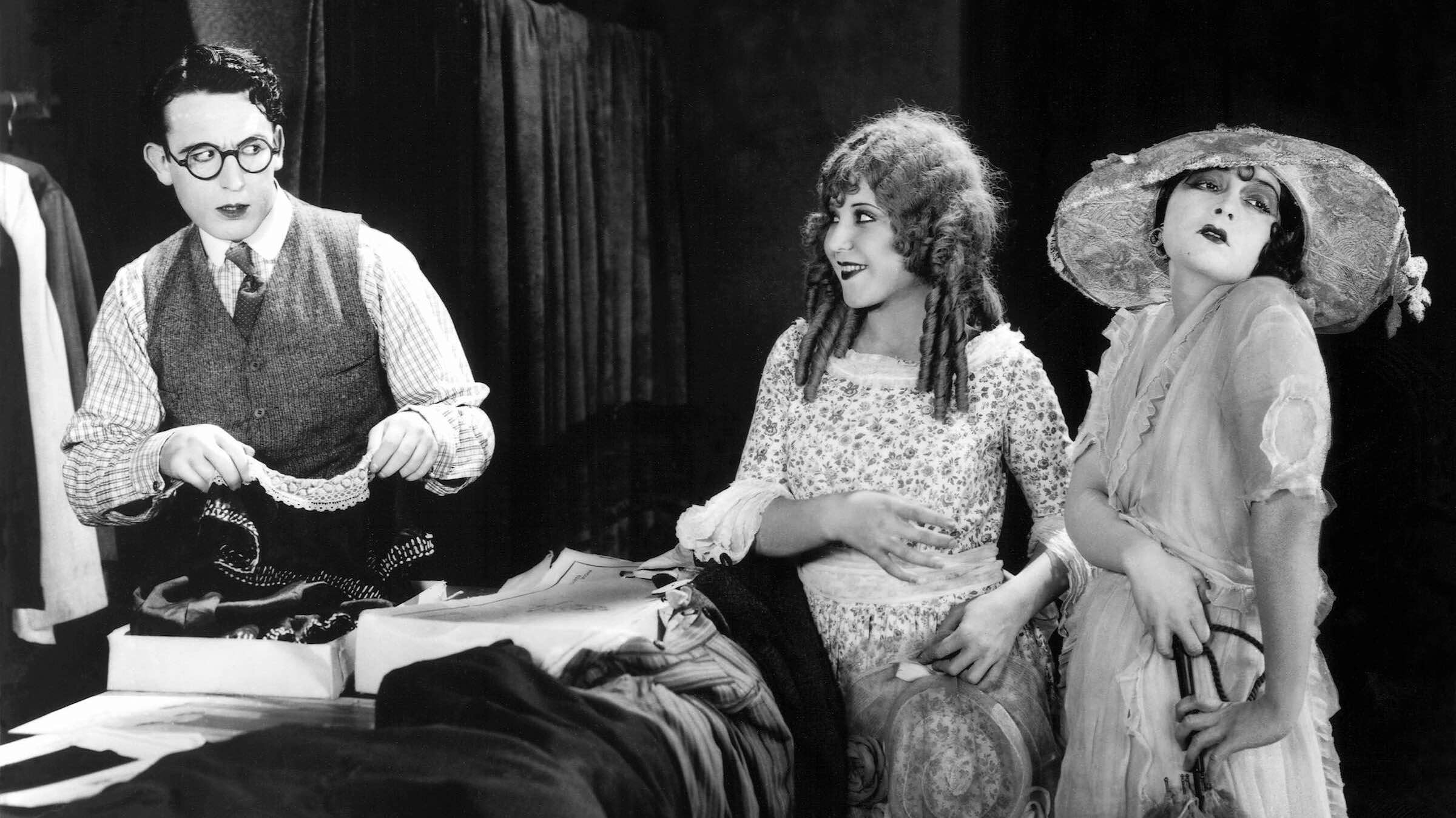Most people are familiar with the famous photograph of a bespectacled young man hanging precariously from the hands of a giant clock high above a city street. But how many are familiar with the comedian in the photo? Few modern moviegoers have had the chance to enjoy Harold Lloyd’s distinctively delightful brand of comedy, but in the silent era he was one of its biggest stars.
Harold Lloyd was born in Nebraska in 1893, and he began acting in school dramas before moving to California, where he performed with stock companies in San Diego and Los Angeles. With characteristic ingenuity, he attained his first job as a movie extra in The Old Monk’s Tale (1913). According to legend, Lloyd learned to waltz past studio guards by putting on makeup and entering like an extra coming back from a break. Once inside the gate, Lloyd was free to make contacts and pursue potential roles.
He soon was part of a regular group of extras that included Hal Roach, and the two became good friends. Roach decided to make his own films after coming into some money, beginning a ten-year partnership with Lloyd and a career as one of the leading producers of silent-era comedy.
Roach and Lloyd collaborated to create the character of Lonesome Luke, who replaced Lloyd’s earlier, short-lived Willie Work. The Lonesome Luke character grew out of pressure felt by Lloyd—and every comedian trying to find work at the time—to duplicate the success forged by Charlie Chaplin. Lloyd went so far as to adopt The Little Tramp’s body language and mustache, deviating ever so slightly by wearing a tight-fitting suit instead of Chaplin’s baggy clothing. Roach and Lloyd made more than Lonesome Luke films in the next two years, sometimes producing a new one-reeler every ten days.
In 1919, Roach signed a new contract with Pathé to produce two-reelers featuring Lloyd’s new character, the young man in a simple suit, occasional straw boater, and round, horn-rim glasses, which Lloyd always referred to as the “Glasses Character.” Mildred Davis was hired as his new leading lady (she would soon also become Mrs. Harold Lloyd). It was also during this period that an accident nearly brought an end to Lloyd’s career.
While filming Haunted Spooks (1920), Lloyd posed for a publicity photo with a prop bomb, the fuse lit. Unfortunately, it turned out to be a real bomb, which exploded while he was holding it, destroying the thumb and first finger of his right hand and temporarily blinding him. After eight months of recuperation, the damage to his face and eyes had healed completely, so he returned to work aided by a carefully crafted prosthetic glove that made his right hand appear normal on film. Despite this injury, Lloyd would go on to perform some of his most daring stunts in thrill comedies such as High and Dizzy (1920), Never Weaken (1921), and Safety Last (1923), which features the iconic image of Lloyd hanging from the hands of the giant clock.
After making five successful features with Hal Roach, Lloyd decided to form his own production company, and the first film to appear under the banner of the Harold Lloyd Corporation was Girl Shy. In essence a romantic comedy, the love scenes between Lloyd’s Harold Meadows and Jobyna Ralston’s Mary Buckingham demonstrate that Lloyd’s talent for comedy is matched by his romantic sensibilities. In an article entitled “What Is Love” that appeared in the February 1925 edition of Photoplay magazine, Lloyd wrote, “Love is the closest thing to laughter and the closest thing to tears … without it, I imagine the flowers would stop blooming and the sun would stop shining and the people would stop laughing.”
Girl Shy is also true to Lloyd’s genius for action. The race-against-time sequence that is the climax of the film served as an inspiration for the chariot race in Ben-Hur (director Fred Niblo had Lloyd join him during the filming of the chariot race to provide tips), and Lloyd lived up to his daredevil reputation by performing the majority of his own stunts. During a particularly dangerous stunt involving a speeding fire engine and a rapidly unspooling fire hose, he was knocked out cold by the heavy brass nozzle attached to the end. As soon as he had regained consciousness, he got up and did it again.
Lloyd made five more silent features and six talkies before unofficially retiring in 1938. He appeared in one last film, Preston Sturges’s The Sin of Harold Diddlebock (1947), before deciding to call it quits. He adjusted well to retirement, pursuing a variety of hobbies at his colossal Beverly Hills estate Greenacres. He was elected Imperial Potentate of the Shriners in 1949, and he served as president of the Shriner hospitals. He also studied painting and color theory, and his love of photography led him to become the first president of the Hollywood Stereoscopic Society, accumulating 300,000 stereoscopic photos. His granddaughter Suzanne Lloyd, who is now head of the Harold Lloyd Trust, writes in 3-D Hollywood, a book she edited of Lloyd’s stereoscopic photographs, “Until he took me to a screening of one of his films at the Cannes Film Festival, I thought [grandfather] was a photographer.” He died in 1971 at the age of 77.
Presented at SFSFF 2002 with live music by Chris Elliott on the Mighty Wurlitzer

